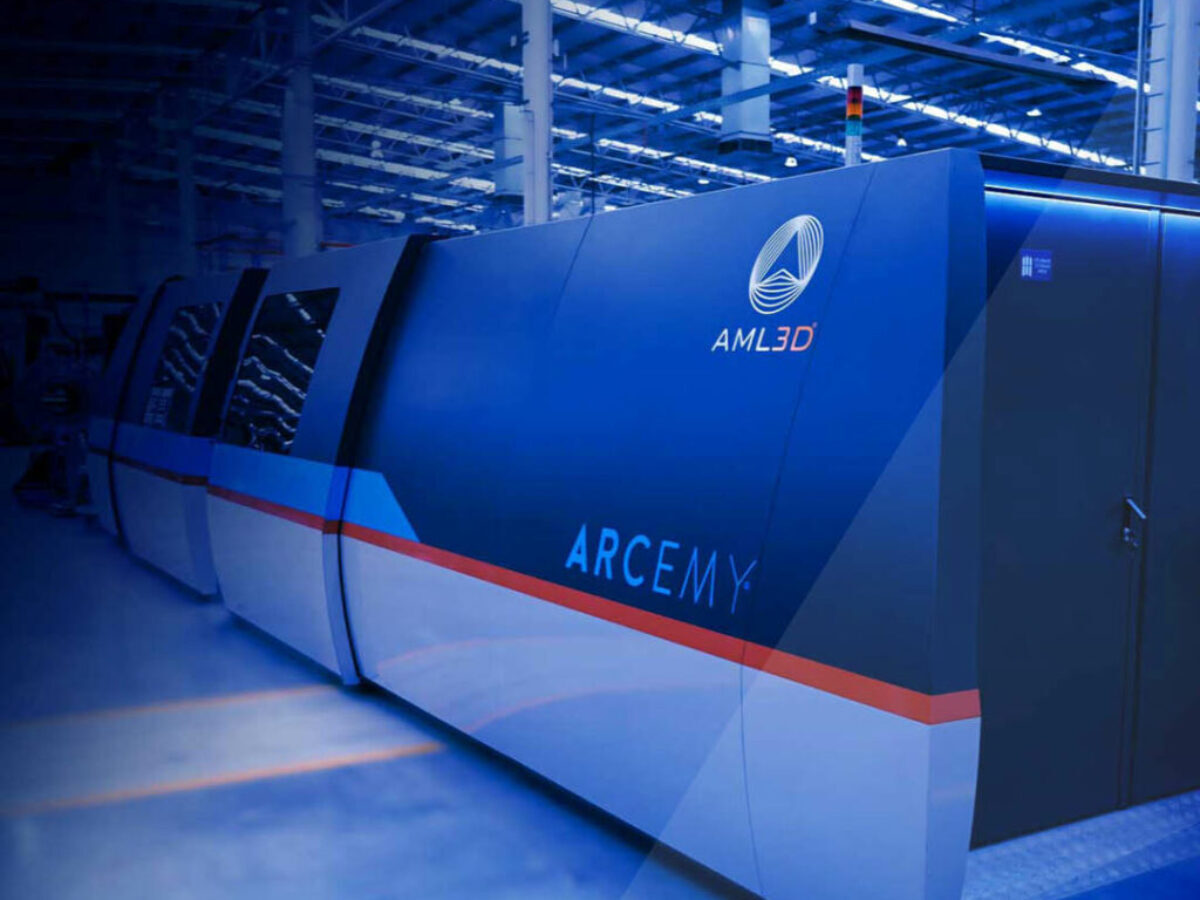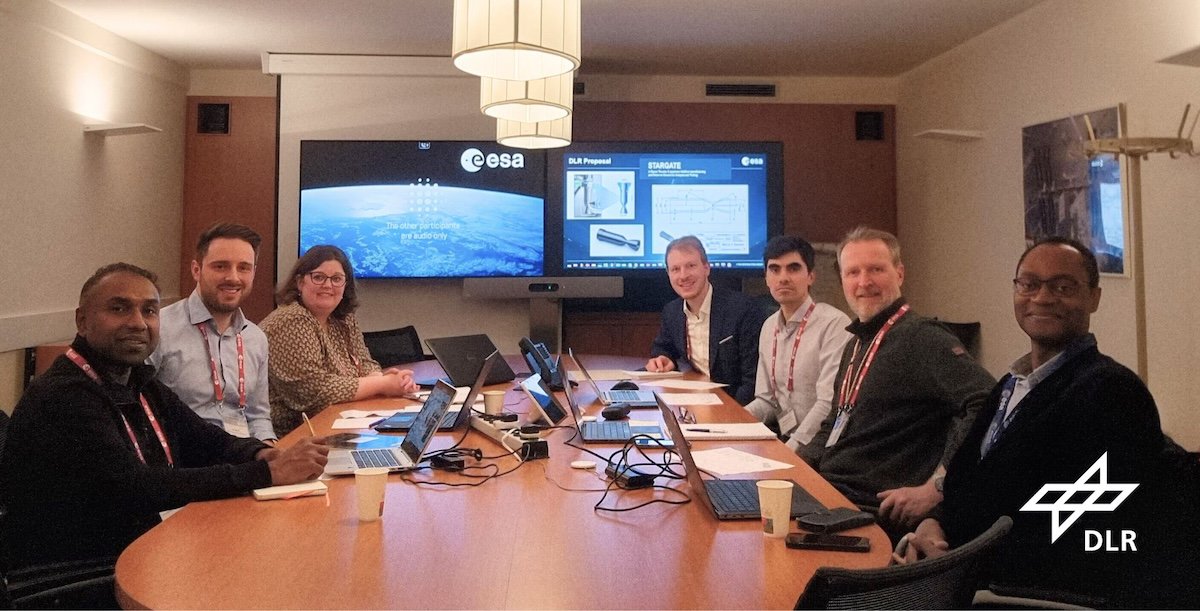In today’s 3D Printing News Briefs, AML3D’s large-scale metal 3D printing system is now online at the largest public utility in the U.S. Moving on, Bright Laser Technologies is 3D printing rocket engine components, and Airbus Defence and Space, the ESA, and DLR are collaborating to print metallic space propulsion components in space. Finally, a professor at the University of Chile is giving his students 3D printed brain models to teach them about neuroscience.
AML3D Completes Commissioning of ARCEMY X 6700 at TVA
Last year, Australian wire arc additive manufacturing (WAAM) OEM AML3D announced that it had sold a large-scale 6700 Edition ARCEMY X system to Tennessee Valley Authority (TVA), the largest public utility in the U.S. and the nation’s sixth largest power supplier. Now, the commissioning of the printer has been successfully completed, and the system is now operational at TVA’s Muscle Shoals, Alabama service facility as part of the Utilities power generation repair fleet. This triggers payment of the final 10.5% of the roughly A$1.972 million component of TVA’s contract with AML3D. The delivery also launches the next phase of the company’s strategy to scale up in the U.S. When the strategy launched in 2023, the focus was on the U.S. defense sector and servicing the Submarine Industrial Base (SIB). Since ARCEMY has been deployed into the SIB supply chain, the company is now servicing the U.S. Navy’s Marine Industrial Base (MIB). After that, its next phase of U.S. growth includes further expansion into sectors including utilities, nuclear, aerospace, marine, and oil & gas.
“Delivery of the TVA ARCEMY® X order is a strong endorsement of AML3D’s decision to focus on the US and our US Growth strategy,” stated Sean Ebert, the CEO of AML3D. “We were always confident we could springboard off our continuing success in supporting the US Defence sector to expand into additional US markets. The TVA contract marks our entry into the Energy and Utilities sectors and we are working hard to open opportunities across several other markets, including Aerospace and Oil and Gas. Even more exciting is the opportunity to use our US playbook to drive growth in the UK and Australia, the AUKUS defence partners and other globally significant markets.”
BLT 3D Prints Critical Components for Space Circling Q1 Rocket Engine
Chinese rocket engine startup Space Circling Aerospace Technology Co., Ltd. recently completed a successful 50-second hot fire test of its 85-ton-class QiaoLong-1 (QL-1) rocket engine. The engine, which features over 20 critical parts 3D printed by Bright Laser Technologies (BLT), demonstrated smooth ignition, stable, high-efficiency operation, and rapid shutdown. The partnership between Space Circling and BLT showcases how advanced metal AM can be integrated seamlessly into the aerospace sector, and resulted in a big milestone in the further development of China’s capabilities in commercial space propulsion. For its QL-1 engine project with Space Circling, BLT provided its customized metal 3D printing services for over 20 critical components as a core supplier, and played an important part in supporting the engine test firing by helping to enhance the QL-1’s reliability and performance.
To ensure a rocket engine’s stable operation, you need high-performance thrust chambers and turbopumps. The thrust chamber is a rocket engine’s primary power source, converting the thermal energy of combustion gases into kinetic energy to provide propulsion. The BLT-S800, BLT-S515, BLT-S1000, and BLT-S450 printing systems were used to print key components for it, such as the oxygen inlet, chamber body, gas generator, and nozzle extension. AM allowed for production of complex internal flow channels in a single build, resulting in lower energy losses and higher combustion efficiency. The “heart” of the engine is its turbopump, which drives the pump to pressurize and send propellant to the combustion chamber. BLT printed several critical turbopump components, like turbine guide vanes, dual-stage impellers, and fuel and oxidizer housings. This helped speed up production efficiency and lower manufacturing costs, as AM consolidates machining, electrode design, and electrical discharge machining (EDM) into one integrated build.
ESA, Airbus Defence and Space, & DLR Want to Print Propulsion Parts on ISS
The European Space Agency (ESA), the Airbus Defence and Space SAS division, and German Aerospace Center (DLR) are collaborating on the STARGATE project, which could lead to a 3D printing first for space if successful. The goal of the project, which officially launched at the 4th Workshop for Advanced Manufacturing at ESA ESTEC in July, is to 3D print functional, metallic space propulsion components on board the International Space Station (ISS). The first part will be a 1-Newton thruster, developed by DLR. Researchers on the ISS will print the thruster and study how microgravity influences the process and material properties. Then, it will be returned to Earth for hot-fire testing. If the project is successful, the 3D printed thruster will be the first fully functional spacecraft component built in space and used in orbit. STARGATE builds on the ESA’s Metal3D project, which deployed the first metal 3D printer able to operate in microgravity to the ISS in 2024.
“This milestone would not be possible without ESA’s Metal 3D Printer initiative, and we’re honored that STARGATE was selected as part of the 5th build job on this unique manufacturing facility,” DLR wrote in a LinkedIn post.
University of Chile Professor Using 3D Printed Brains to Teach Neuroscience

Ariel Lara, an academic at UC Chile College and the Faculty of Medicine, who is also part of the Department of Neurology and a member of the Interdisciplinary Center for Neuroscience, NEURO UC, in the “College Seminar” class, is handing out the 3D brains to his students. Credits: Karina Fuenzalida.
Ariel Lara, a professor at UC Chile College and the Faculty of Medicine, thought a tangible aid would be a helpful, hands-on way to teach students about social behavior from the perspective of neuroanatomy. So he asked the FABHAUS Digital Manufacturing Laboratory with the Faculty of Architecture, Design and Urban Studies to 3D print more than 30 scale brain models. Also part of the Department of Neurology and a member of the Interdisciplinary Center of Neuroscience, NEURO UC, Lara, and other academic staff, must also teach first-year College Seminars, which help develop university life skills, encourage critical thinking for interdisciplinary projects, and explore the staff’s own research topics. In his class, Lara addresses social behaviors, explores the various types, and offers his students a biological basis for understanding the brain’s “underlying mechanisms.” FABHAUS, which has a variety of digital manufacturing equipment, can print six highly detailed brain models out of PLA over three days on a single machine. As a sensory learning tool, the students are encouraged to draw on the models to identify different parts of the brain, so they can better understand what role our brains play in social behavior.
“Most of them were surprised, happy, and even anxious: they wanted their brains right away,” Lara said about his students. “The idea is that they take them with them to class and work with whiteboard markers to mark and draw on areas of the brain, because the advantage is that it is washable and reusable.
“The fact that they can manipulate the information with their hands and that it is much more visual, I think, makes the sensory experience different from looking at a neuroanatomy book, which they most likely won’t do, but rather look at a tablet. It’s not the same thing.”




